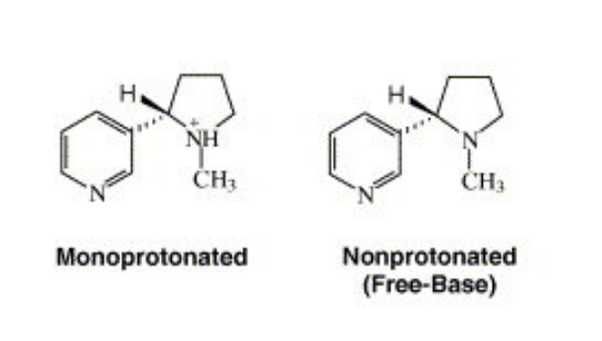Difference between Free Base Nicotine and Nicotine Salt
Nicotine salts have been available for the past couple of years now, recently hitting the spotlight as it continues to grow in popularity. Nicotine salts (or Nic Salt/ NS) has completely changed how end users operate products, with manufacturers designs targeting the Nic Salt market.
Nicotine is a rather contractive substance as it works as a stimulant and a relaxant. Producing varying effects from person to person. It is physically and psychologically addictive, which leads most beginner vapers to choose some level of nicotine when making the switch to e-cigarettes.
Typically, the market has produced e-liquids with ‘freebase nicotine’, the other components are propylene glycol, vegetable glycerine & flavouring compounds that carry the nicotine when vaporised. Freebase nicotine is traditionally used within regular cigarettes & nicotine replacement therapies (NRT) such as: patches, gum, and inhalers.
If freebase nicotine has been around for so long, and is considered a market fundamental then why make the change?
For Smoking cessation to endeavour, e-cigarettes need to accurately simulate a traditional out of the packet cigarette. This includes accurate nicotine dosing, and throat hit. When comparing the requirement to typical freebase nicotine, the PH values are considerably more acidic, which introduces a harsher throat hit in higher doses. When smokers make the switch, they must be introduced to a method of inhaling a similar amount of nicotine to satisfy cravings. Using a high dose will cause unwanted harshness, using a low dose will increase e-liquid consumption to compensate for the lower dose. Using the incorrect nicotine level too soon, can eventually lead users back to traditional cigarettes.
So, here comes Nicotine Salt. Sitting right in the middle of the harshness/throat hit scale. Users can enjoy the nicotine hit they require with much less of a throat hit compared to free base.
Nicotine Salts are derived from a tobacco leaf extraction, then bonded with benzoic acid. This allows vaporisation to occur at a lower temperature, and with a lower PH level compared to typical freebase nicotine. Providing a more accessible platform for smokers to switch from typical cigarettes. With all this combined using Nicotine Salts can provide the correct nicotine dosing, correct throat hit, less battery consumption, less e-liquid consumption & in cases better flavour production.
With a vast array of flavours to choose from, what device do you use?
Most manufacturers have devices suited for the consumption of Nicotine salts. For the best experience we suggest using a tighter draw tank/pod system paired with a MTL (mouth to lung draw) coil. Resistances typically range from 0.8 Ω to 1.8Ω, however this is just a guideline and manufacturer resistances can vary.
Usually the manufacturer will specify on its product whether the coil is MTL or DL (Direct lung inhale) on the coil or the packet, so its best practice to do a little research before clicking the buy button.
Here's some devices we would suggest for use with nicotine salt
Which one is safer? What should you use?
The one and only difference between Nicotine Salt and freebase is the addition of benzoic acid. Considering this Nicotine salt is very likely to be just as safe as regular freebase.
Nicotine Salt might be the right fit for you if:
You are a transitioning smoker looking for stronger nicotine levels
A MTL vaper using pod devices or MTL tanks.

